Blog
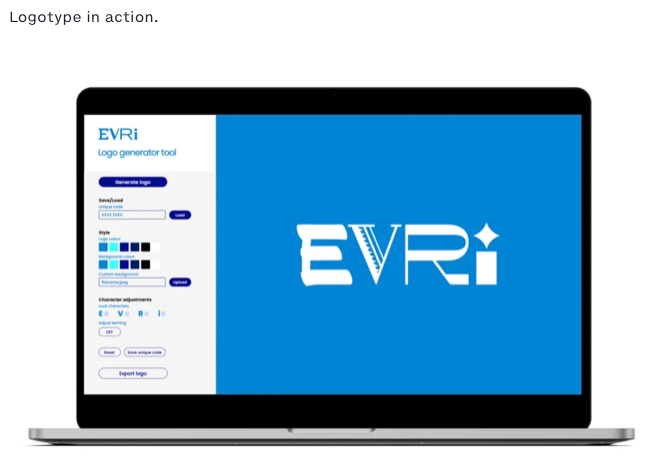
Nothing New Under The Sun: A Look at Current Typographic Trends As a typographic historian of sorts, and owner of CARE Typography, a small design studio focusing on reviving historic and often missed typefaces, I read a number of type reports and books. Of special interest is the newsletter from the Monotype corporation highlighting trends and faces for today. (See https://bit.ly/3Y1R1BV ) A couple of statements in their latest reports by Phil Garnham, Creative Type Director, at Monotype got me thinking about culturally laced typographic styles and faces that have graced our historic type landscapes. He notes a “new universal style emerging: flat design in modern online brands, almost reverting to the minimalist style of five years past. Many companies are going for clean geometric style with type.” This is hardly a new concept or trend. A deeper dive into the history of type design over the centuries helps us understand what may be happening. In the history of typography, on which I have written (See H. Carl Shank, Typographical Beauty Through the Ages: A Christian Perspective, Lulu.com, 2025), the visual dissonance of the Dadaist movement in type was replaced by the order of Constructivism and its functional accessible design principles. Art Deco gave way to Swiss type beauty with its readability and visual harmony in the faces of Helvetica and Univers. Grunge and Psychedelic type by Wes Wilson gave way to the sans serifs used universally today. Hippie children of the 60s grew up to be corporate CEOs of the 80s and 90s, shedding their anti-establishment and even destructive behaviors for the boardroom and nice houses with ordered yards and gardens. This has been the story of all cultural movements, including typographic movements. They reflected their cultural morés of the times, but the bold, audacious, violent, raucous types always gave way to what we internally want and desire — a return to simplicity, functionality and order and type viability. From a theological viewpoint, the thought provoking words of the writer of Ecclesiastes of the Bible apply here — “What has been is what will be, and what has been done is what will be done, and there is nothing new under the sun. Is there a thing of which it is said, “See, this is new”? It has been already in the ages before us.” (Ecclesiastes 1:9, 10) “Customers are seeking affinity with brands that seek justice in our world, and that goes beyond a brand’s mission. People want to see brands actively involved in solving societal problems.” The issues of climate change, diversity movements, equity and inclusion initiatives are seemingly new but typographically rehearse type’s movements from Gutenberg to today. Calligraphers and typographers have been dealing with cultural changes and shifts for ages. I applaud what Monotype and others are seeking to do with variable fonts and digital type, but I would historically caution us in the business not to place too much excitement and hubris after cultural trends. Carl Shank CARE Typography December 2025
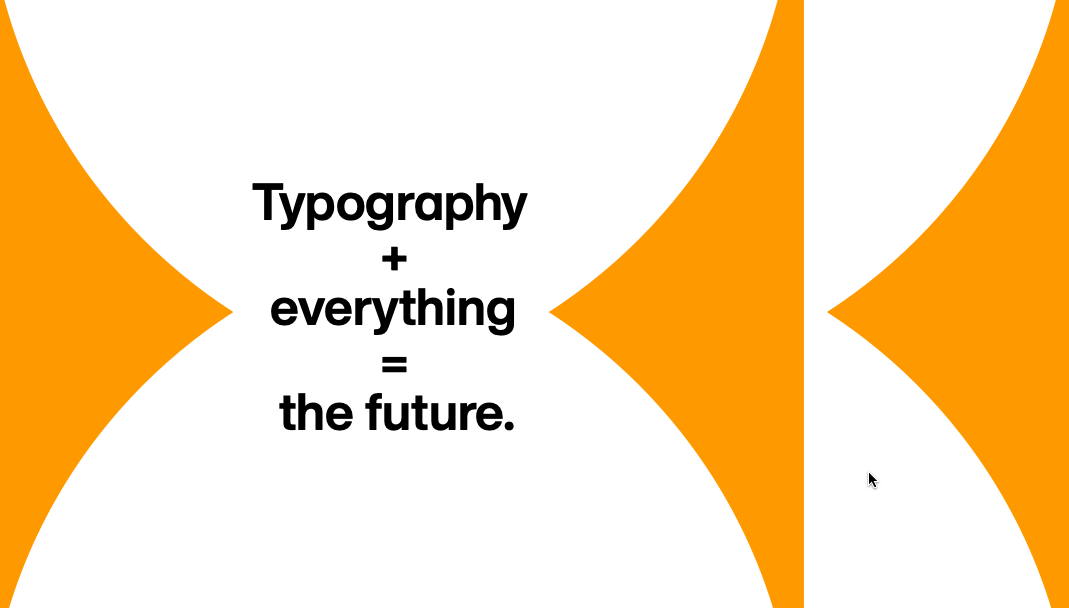
AI & Typography: A Christian-Theistic Present Look Monotype Corporation recently released their 2025 Report concerning Artificial Intelligence and Typography called Re-Vision (See https://bit.ly/4aEUePf ). This eReport looks at the various typographical, social and cultural issues surrounding AI and how it affects and impacts the craft and science of typography. A selected summary of the Report is available below.
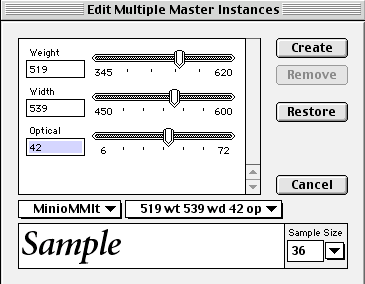
Variable Fonts: An Introduction History & Use “Variable fonts are a single font file that behaves like multiple fonts.” (John Hudson) The technology behind variable fonts has been around for a while. Starting in the 1990s, interpolation and extrapolation have been used to create different masters, and weights in typefaces. For example, by designing a regular and bold weight a semibold could be interpolated from the two masters.
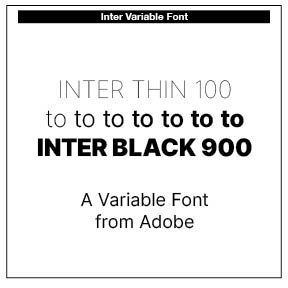
Advances in Typography: Late Twentieth to Twenty-First Centuries A Historical Sketch (Part 3) Late Twentieth to Early Twenty-First Century: Corporate and Contemporary Digital Jonathan Hoefler (b. 1970) is an American type designer known for influential typefaces such as Hoefler Text, Gotham, Knockout, and Mercury. Gotham, co-designed with Tobias Frere-Jones, gained international fame through its use in Barack Obama’s 2008 campaign and has since become a staple in corporate and editorial branding. Born in New York City, Hoefler’s early fascination with everyday typography led him to a self-taught career in type design. In 1989, he founded the Hoefler Type Foundry, quickly earning recognition with Champion Gothic for Sports Illustrated. His partnership with Roger Black and later Tobias Frere-Jones resulted in dozens of widely used typefaces. Hoefler’s work is characterized by a blend of historical research and modern engineering, shaping digital typography standards. His typefaces are used by major publications, cultural institutions, and corporations worldwide. In 2021, Monotype acquired his company, marking a significant moment in the evolution of digital type design. Hoefler’s approach has redefined contemporary type design, bridging historical revivals and modern usability. His influence extends across print and digital media, setting new standards for clarity, versatility, and typographic excellence.
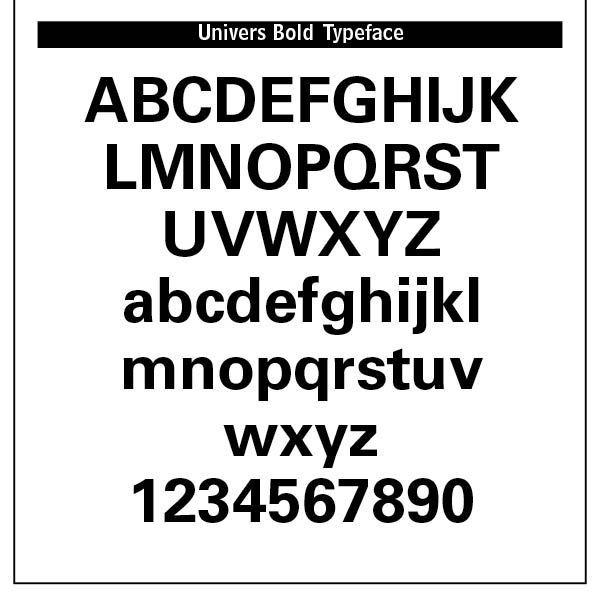
Mid-Century Modernism & Corporate Typography (1945–1980) Designers like Jan Tschichold were foundational to many of the Swiss design principles. This style evolved from Constructivist, De Stijl and Bauhaus design principles, particularly the ideas of grid systems, sans-serif type and minimalism. Emerging in Switzerland during the 1940s and 1950s, this typography, also known as the International Typographic Style, directly responded to the type chaos of Dada and the stylization of Art Deco. The International Typographic Style (or the Swiss Style) in the 1950s and 1960s focused on grid systems, objective communication and sans-serifs. Key figures were Josef Muller-Brockmann, Emil Ruder and Armin Hofmann. The Swiss style emphasized readability, visual harmony and universality. Clarity, objectivity and functionality were key components. Contributors included Max Miedinger, creator of the Helvetica typeface (1957 by Miedinger & Eduard Hoffmann), and Adrian Frutiger, creator of the Univers typeface in 1957, and Hermann Zapf, creator of Optima in 1958. Swiss style became the dominant graphic language of postwar corporate identity. Other Blogs I have written noted the development of Helvetica ( “Helvetica’s Journey” July 13, 2024 ). Adrian Frutiger (1928–2015) was a Swiss typeface designer whose career spanned hot metal, phototypesetting and digital typesetting eras. Frutiger’s most famous designs, Univers, Frutiger and Avenir, are landmark sans-serif families spanning the three main genres of sans-serif typefaces —neogrotesque, humanist and geometric. Univers is a clear, objective form suitable for typesetting of longer texts in the sans-serif style. Starting from old sketches from his student days at the School for the Applied Arts in Zurich, he created the Univers type family. Folded into the Linotype collection in the 1980s, Univers has been updated to Univers Next, available with 59 weights. This lasting legible font is suitable for almost any typographic need. It combines well with Old Style fonts like Janson, Meridien, and Sabon, Slab Serif fonts like Egyptienne F, Script and Brush fonts like Brush Script, Blackletter fonts like Duc De Berry, Grace, San Marco and even some fun fonts. Univers is not a “free” font and must be purchased from Linotype. Other faces by Frutiger are Frutiger and Avenir. These fonts were designed to be legible, versatile and anonymous, avoiding stylistic “noise” to focus on clear communication. Swiss type used a systematized approach to typography, enabling consistent spacing, alignment and hierarchy, crucial for multilingual and complex layouts. Typography was seen as part of a harmonious, modern composition. Generous white space facilitated clarity and focus.
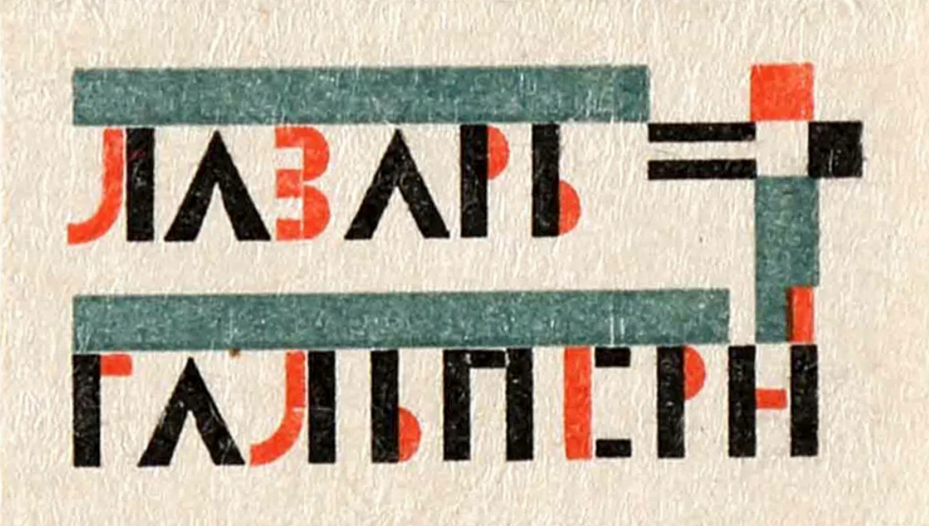
Advances in Typography: Twentieth Century A Historical Sketch (Part 1 ) Early Twentieth Century: Form Follows Function Bauhaus Precursor The Deutscher Werkbund (German Work Foundation, est. 1907, Munich) was a pivotal German association of artists, architects, designers, and industrialists that advanced rational, industrial design and laid the foundation for modernist sans-serifs. The Werkbund emphasized functionalism, simplicity, honest use of materials, and alignment with industrial production, rejecting unnecessary ornamentation and anticipating the principle “form follows function.” Its purpose was to elevate German industrial products by integrating artistic excellence, technical innovation, and industrial manufacturing, summarized by the motto: “From work to form”—good design as a cultural and economic asset. Key founders included Hermann Muthesius, Peter Behrens, Fritz Schumacher, and Karl Schmidt. Their goals were to enhance everyday objects through quality design, foster a unified visual culture in Germany, partner artists with industrial manufacturers, promote standardization and modern production techniques, and compete internationally in design excellence. The Werkbund is recognized as a precursor to the Bauhaus and modern industrial design. Notable members included Walter Gropius, Ludwig Mies van der Rohe, and Peter Behrens. The organization established principles of functional, simplified forms, standardized mass production, and the concept of design as a cultural force. They hosted influential exhibitions, notably the 1914 Cologne Exhibition, as well as publishing journals and defining standards for high-quality design. Futura & Geometric Modernism (1920s–1930s) As we saw in my last post, between 1500 and 1900 typography evolved from Renaissance humanist forms to industrial mass production and artistic revival. Old style typefaces (like Garamond) moved to Transitional faces (like Baskerville) to Modern/Didone faces (like Didot and Bodoni) to Industrial display types (fat faces, slab serifs, sans serifs) to the Arts & Crafts revivals. Art Nouveau was a reaction against the academicism, eclecticism and historicism of nineteenth century architecture and decorative art. The new art movement had its roots in Britain, in the floral designs of William Morris, and in the Arts and Crafts movement founded by the pupils of Morris.
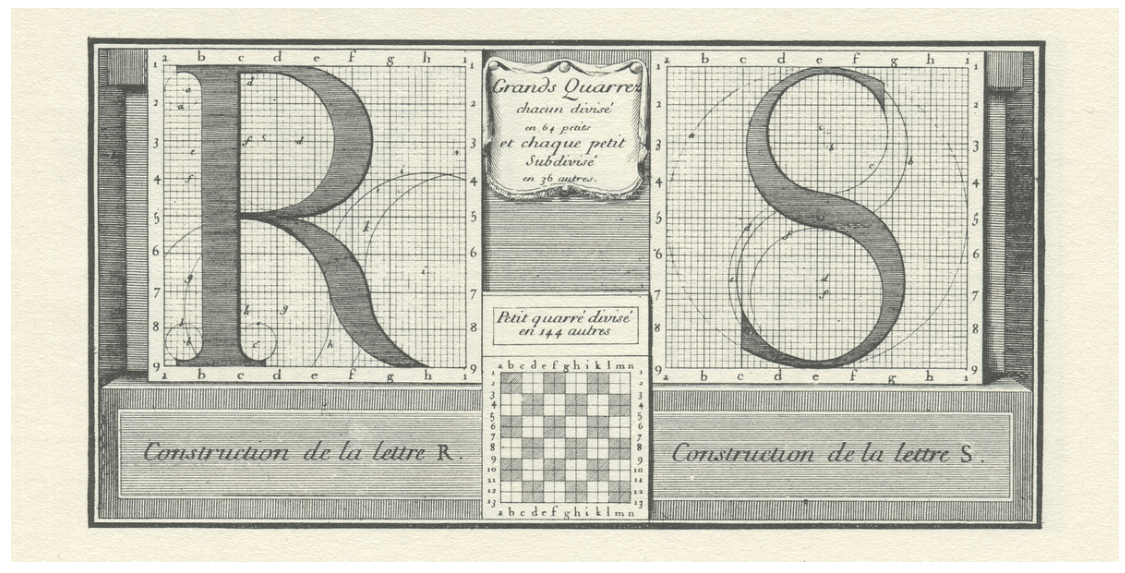
Industrial Revolution and Display Typography (1800–1870) I have recently viewed the broadcasts of Great Canal Journeys, a narrated insight into Britain’s canals and waterways by two married and retired actors. They have been responsible for the restoration of a number of Britain’s canal systems. They noted that the Industrial Revolution in that country brought about the almost demise of the canals for moving products across the continent. The railroads took over much of the movement of goods from one place to another. In much the same way, typography and printing were forever transformed by the Industrial Revolution. Britannica notes that “the Industrial Revolution changed the course of printing and typography not only by mechanizing a handicraft but also by greatly increasing the market for its wares. Inventors in the nineteenth century, in order to produce enough reading matter for a constantly growing and ever more literate population, had to solve a series of problems in paper production, composition, printing, and binding.”
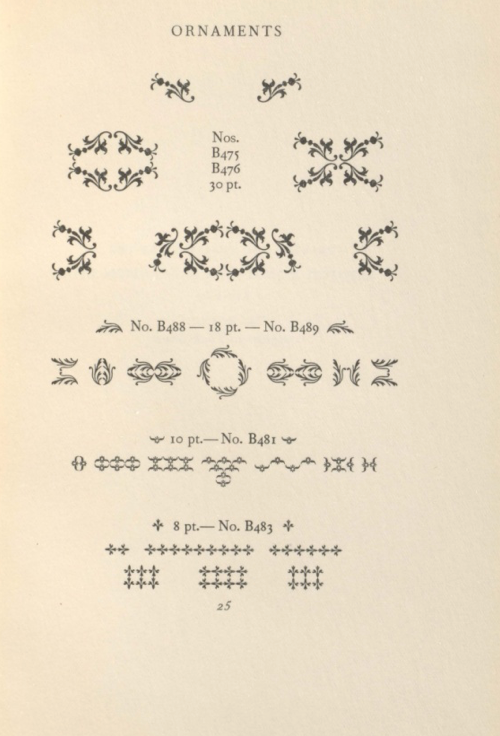
Advances in Typography (1500–1900) A Historical Sketch (Part 1) Early Renaissance (1500–1550) We had noted in the Blog “What Happened After Gutenberg: 1460–1640” (November 8, 2025) that movable type spread across Europe beyond its German roots. Gothic Blackletter type, though still used for religious and legal documents, began to give way to Venetian old style humanist faces. Influenced by humanist handwriting and calligraphy, Aldus Manutius and Francesco Griffo developed italic type for compact books. National printing centers became established in Venice, Italy, Paris and Lyon, France, Basel, Germany and Antwerp in the Netherlands The transition from Gothic to Italic typefaces was part of the broader evolution of typography that took place during the Renaissance period, driven by shifts in cultural, aesthetic, and technological factors. The Renaissance, beginning in Italy in the fourteenth century, marked a revival of classical antiquity and a move toward humanism. This brought a renewed interest in the legible, flowing scripts of Roman and Greek antiquity, which were more readable and aesthetically simple compared to Gothic lettering. The development of the printing press (ca. 1440) by Johannes Gutenberg created a need for more versatile and legible typefaces. The emerging humanist values aligned with a preference for typefaces that resembled the clear, round, and graceful writing of ancient Roman scripts.\ The Italic typeface was introduced by Aldus Manutius in Venice around 1501. Italic type is a cursive font based on a stylized form of calligraphic handwriting. Along with Blackletter (See Blog Jan 16, 2025 Blackletter Type and Universities) and roman type, italic has served as one of the major typefaces in the history of Western typography. Italics takes notable influences from hand drawn calligraphy, with italic letters normally slanted slightly to the right. Upper case letters may have typographic swashes, flourishes inspired by ornate calligraphy. The name “italic” comes from their Italian use, to replace documents traditionally written in a hand-written style called chancery hand. Notice also the small “end point bowls” on some of the letters, where the ink pen stopped for a second. While modern italics are often more condensed than roman types, historian Harry Carter describes Manutius' italic as about the same width as roman type. To replicate handwriting, Griffo cut at least sixty-five tied letters (ligatures) in the Aldine Dante and Virgil of 1501. Italic typefaces of the following century used varying but reduced numbers of ligatures. Manutius sought to create more compressed elegant typefaces that could fit more text on a page, catering to the rising demand for smaller, portable books. Italic was based on the handwriting of Niccolò de’ Niccoli, a Renaissance scholar and calligrapher. Italic typefaces are defined by their slanted, cursive-like appearance, with letters that have a flowing, dynamic quality. It allowed for more text to be fitted on the page and mimicked the handwriting style of humanist scholars, like the handwriting of Petrarch. The common italic “slope” was introduced in the sixteenth century — “The first printer known to have used them was Johann or Johannes Singriener in Vienna in 1524, and the practice spread to Germany, France and Belgium. Particularly influential in the switch to sloped capitals as a general practice was Robert Granjon, a prolific and extremely precise French punchcutter particularly renowned for his skill in cutting italics. Vervliet comments that among punchcutters in France "the main name associated with the change is Granjon's.” (Wikipedia on Italic Type) The insertion of an italic typeface alongside a roman face would wait until later to distinguish portions of a book not properly belonging to the work, such as introductions, prefaces, indexes, and notes; the text itself being in Roman. Later, it was used in the text for quotations ; and finally served the double part of emphasizing certain words. Italic type was not only more elegant than the Gothic but also more efficient in terms of space. It became the preferred choice for printed texts that emphasized classical learning, philosophy, poetry, and humanist literature. Italic was initially used for entire texts but later became more common for emphasis alongside Roman type.

What Happened to Type After Gutenberg? A Brief Historical Sketch from 1460-1640 At the end of the 15th century, German printing was at the forefront of a revolutionary transformation in Europe, driven by the invention of the movable-type printing press by Johannes Gutenberg in the mid-15th century. This development had a profound impact on culture, education, and the dissemination of knowledge. By the end of the century, Germany had become one of the key centers of printing in Europe, particularly in cities like Mainz, Nuremberg, and Augsburg. Books printed before 1501 are referred to as incunabula . German printers produced a significant portion of the incunabula, with many focusing on religious texts such as the Bible, liturgical works, and theological treatises. Secular works, including classical texts, legal documents, and scientific works, also gained prominence towards the end of the century. Incunabular typography can be said to have two major sources of inspiration —fifteenth century scribes and German typecutters, the second group of which drew largely on (and sometimes coincided with) the first. Fifteenth-century typography was characterized by both continuity and innovation. Typecutters like Nicolas Jenson and Johan Veldener found themselves highly influential in their regions, designing typefaces for many printers, but scribes also contributed their weight to the design of typography. German printers played a key role in developing early typefaces. However, they were not the only typeface creators and users. There were altogether in the Netherlands twenty-two towns where books were issued before 1500. When printing had once been introduced it spread rapidly, all but three towns starting within the first ten years. Jacob Gibbons notes that types “changed hands” and were sold or rented across Europe, Germany to Italy and France, France and the Rhine valley to England, the Netherlands to England and France to the Netherlands. Type founding and paper making were international businesses. Typography became a vehicle of cultural exchange in late medieval and early modern Europe. Thus typography was as mobile as the printing press itself in fifteenth century Europe, and perhaps a more subtle carrier of cultural, regional, national, and even personal identity. One of the most popular typeface was Blackletter (also called Gothic script or Fraktur), which dominated printed works in Germany during this period. The dense and elaborate script was particularly suited to religious and formal texts. However, that Gothic Blackletter script was developed with nuances across Europe. Gutenberg’s textura quadrata face, used in printing his famous Bible, became Gutenberg textura used in university and legal settings. Albrecht Pfister produced his own typeface, somewhat distinct from Gutenberg, though possibly derived from it. Ulrich Zell used Fust and Schoeffer’s Durandus typeface. Rotunda type became a readable alternative to Gutenberg’s. Zainer’s Cotico Antiqua was used until 1485. The Schwabacher type was a dense but softer face, paving the way until the Fraktur face in the sixteenth century and beyond. By 1500, there were over 1,000 printers operating in various German cities, making Germany a leading hub for the printing industry. Notable printing centers included: Mainz—The birthplace of Gutenberg’s press; Nuremberg — An important center for both printing and intellectual activity; and, Augsburg—A commercial and printing hub. What is often lost in typographical history in the years closely following Gutenberg are the important printers and typographers in Germany, Italy, Switzerland, France, the Netherlands, Spain, England, Austria, Sweden, Holland, Denmark, Scotland, Mexico, Ireland and the United States who furthered the cause of typography and printed works. This Blog serves as a historical sketch of a number of these important people.

SWISS TYPE BEAUTY DESIGNERS LIKE JAN TSCHICHOLD were foundational to many of the Swiss design principles. This style evolved from Constructivist, De Stijl and Bauhaus design principles, particularly the ideas of grid systems, sans-serif type and minimalism. Emerging in Switzerland during the 1940s and 1950s, this typography, also known as the International Typographic Style, directly responded to the type chaos of Dada and the stylization of Art Deco. The Swiss style emphasized readability, visual harmony and universality. Clarity, objectivity and functionality were key components. Contributors included Max Miedinger, creator of the Helvetica typeface and Adrian Frutiger, creator of the Univers typeface, both in 1957. The Journey of Helvetica We all use Helvetica. In fact, some say it has been overused through modern years. Helvetica derives its powerful simplicity and display qualities from the 1896 typeface Akzidenz-Grotesk. “The design originates from Royal Grotesk light by Ferdinand Theinhardt who also supplied the regular, medium and bold weights. Throughout the years, Berthold has expanded this extremely popular and versatile family. AG Super was developed in 1968 by Günter Gerhard Lange and is an excellent choice for headlines. In 2001, Günter Gerhard Lange added more weights for Berthold including Super Italic and Extra Bold italic.”[1] “Helvetica is a twentieth-century Swiss revision of a late nineteenth century German Realist face. The first weights were drawn in 1956 by Max Miedinger, based on the Berthold Foundry’s old Odd-job Sans-serif, or Akzidenz Grotesk, as it is called in German. The heavy, unmodulated line and tiny aperture evoke an image of uncultivated strength, force and persistence. The very light weights issued in recent years have done much to reduce Helvetica’s coarseness but little to increase its readability.”[2]

